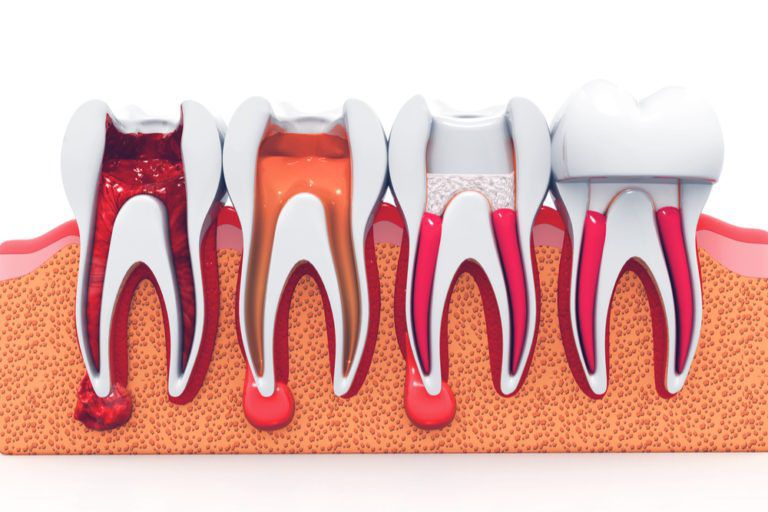Painless Root Canals
We believe a visit to the dentist is more than an errand or something to check off your to-do list – rather, it’s a loving act of self-care.
Root Canal Treatment
Let me start with saying that we like to avoid root canals as much as we can! Minimally invasive dentistry is our goal with every patient and procedure.
However, at times, a root canal is one of not so many options that is left for a badly decayed, traumatized or infected tooth. The excruciating pain of an infected tooth occurs when its nerve center has been affected. Every tooth has a nerve and blood supply that sits inside the tooth, this is called a pulp. When a tooth becomes infected the diseased pulp needs to be removed and tooth thoroughly cleaned inside. If left untreated an infection can turn into an abscess at the base of the root and give rise to a life-threatening emergency. The latter often presents as swelling of the facial tissues, while toxins enter the bloodstream, fever and rapid bone loss in the jaw.
Root canals are probably the most notorious procedure in dentistry that is associated with fear and pain. However the advances in dental technology make it painless. The procedure will also relieve you from pain caused by the infection allowing you to enjoy all the foods you love without any pain from heat, cold, or biting too hard.
In addition to our technology we created an atmosphere of comfort and relaxation in the office that calms you down while we bring your infected tooth back to health.
In our office we do one visit root canal therapy routinely unless medical necessity dictates otherwise.
If you are experiencing pain in your mouth please call us today!


Root Canal Retreats
With proper care, most teeth that have had endodontic (root canal) treatment can last as long as other natural teeth. Occasionally, the tooth becomes painful or diseased months or even years after successful treatment. This is when a tooth that has received endodontic treatment fails to heal.
As occasionally happens with any dental or medical procedure, a tooth may not heal as expected after initial treatment for a variety of reasons:
– Narrow or curved canals were not treated during the initial procedure;
– Complicated canal anatomy;
– The placement of the crown or other restoration was delayed following the endodontic treatment; and
– The temporary restoration did not prevent salivary contamination to the inside of the tooth.
In other cases, a new problem (for instance, new decay can expose the root canal filling material to bacteria, causing a new infection in the tooth) can jeopardize a tooth that was successfully treated.
The initial visit will consist of a clinical exam of the tooth, x-rays and discussion of your treatment options. If together with you we choose retreatment, the retreatment will be scheduled at that time for a future date. Antibiotics are frequently prescribed during this visit.
At the retreatment appointment, local anesthetic is administered to numb the tooth. After the tooth is numb it is opened by the dentist to gain access to the root canal filling material. In many cases, complex restorative materials (crown, post and core material) is removed to permit access to the root canals.
After removing the root canal filling, the canals are cleaned and carefully examined. Some dentists use a microscope, searching for any additional canals or unusual anatomy that requires treatment. We may refer you to an endodontist (root canal specialist) only if we deem it absolutely necessary.
After cleaning the canals, they are sealed and a temporary filling is place in the tooth.
After retreatment is completed you need to have a new crown or other restoration placed on the tooth to protect, strengthen and restore it to full function.
Alternatives to RCT retreatment include but not limited to an endodontic surgery (apicoectomy) or an extraction and subsequent replacement of the tooth.
Please schedule an appointment if you feel any discomfort in your mouth and you need our help to save the teeth that hurt!


